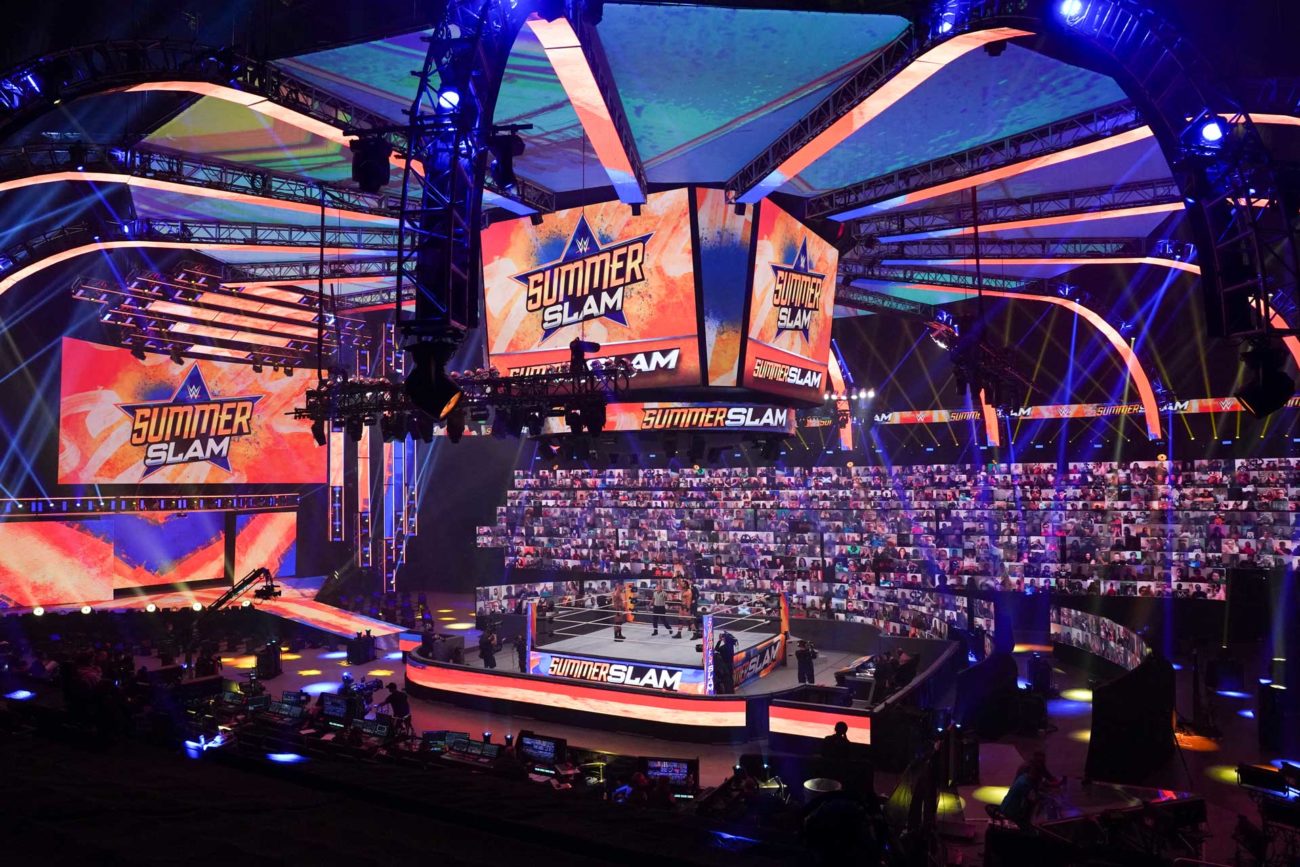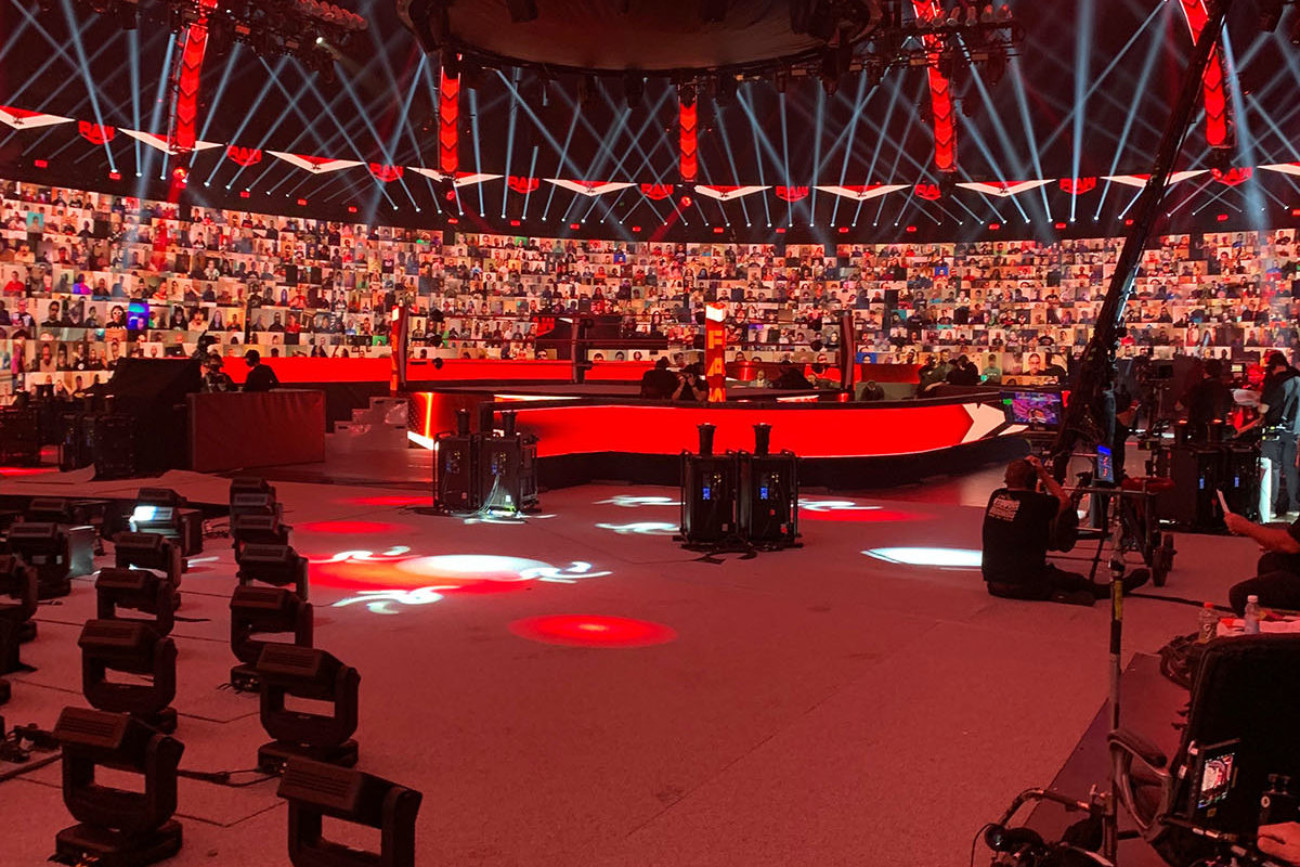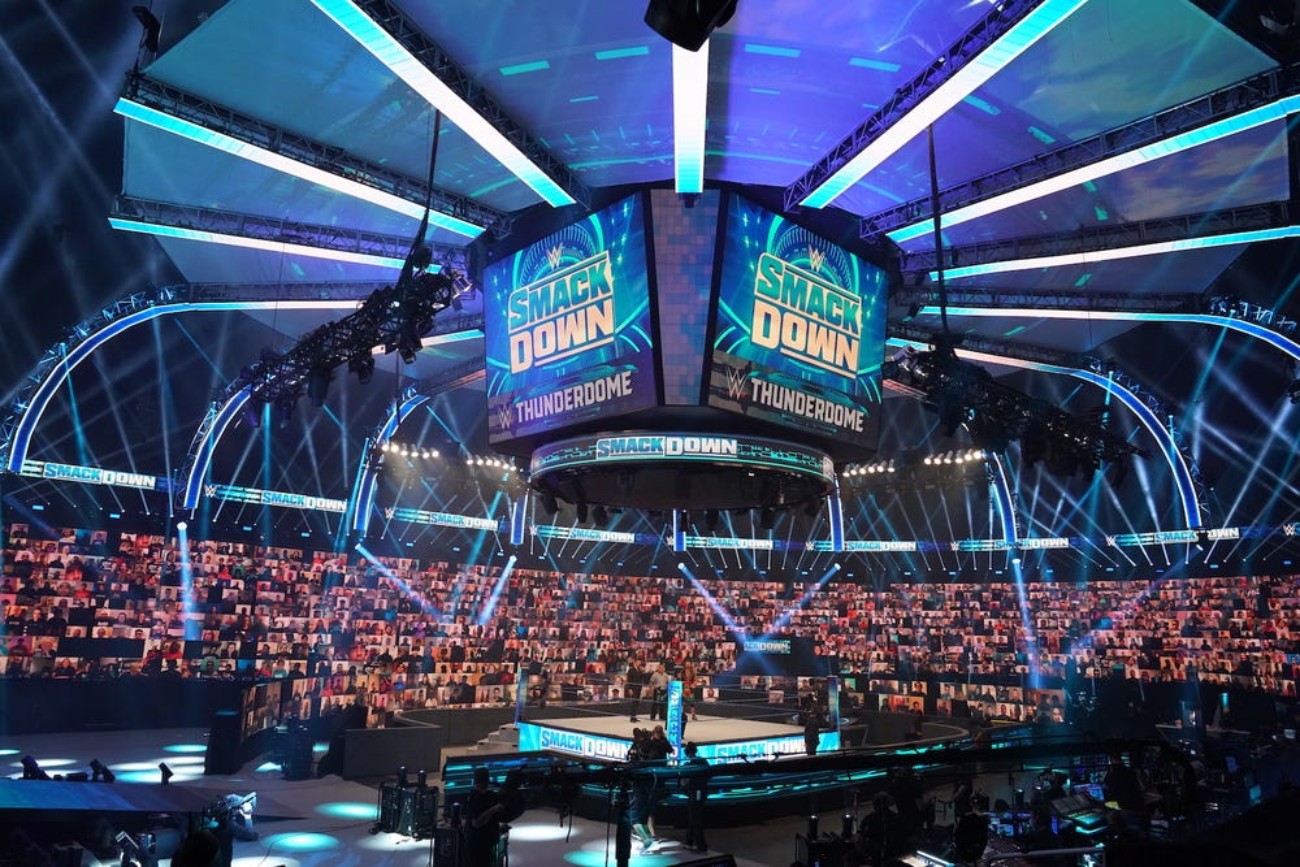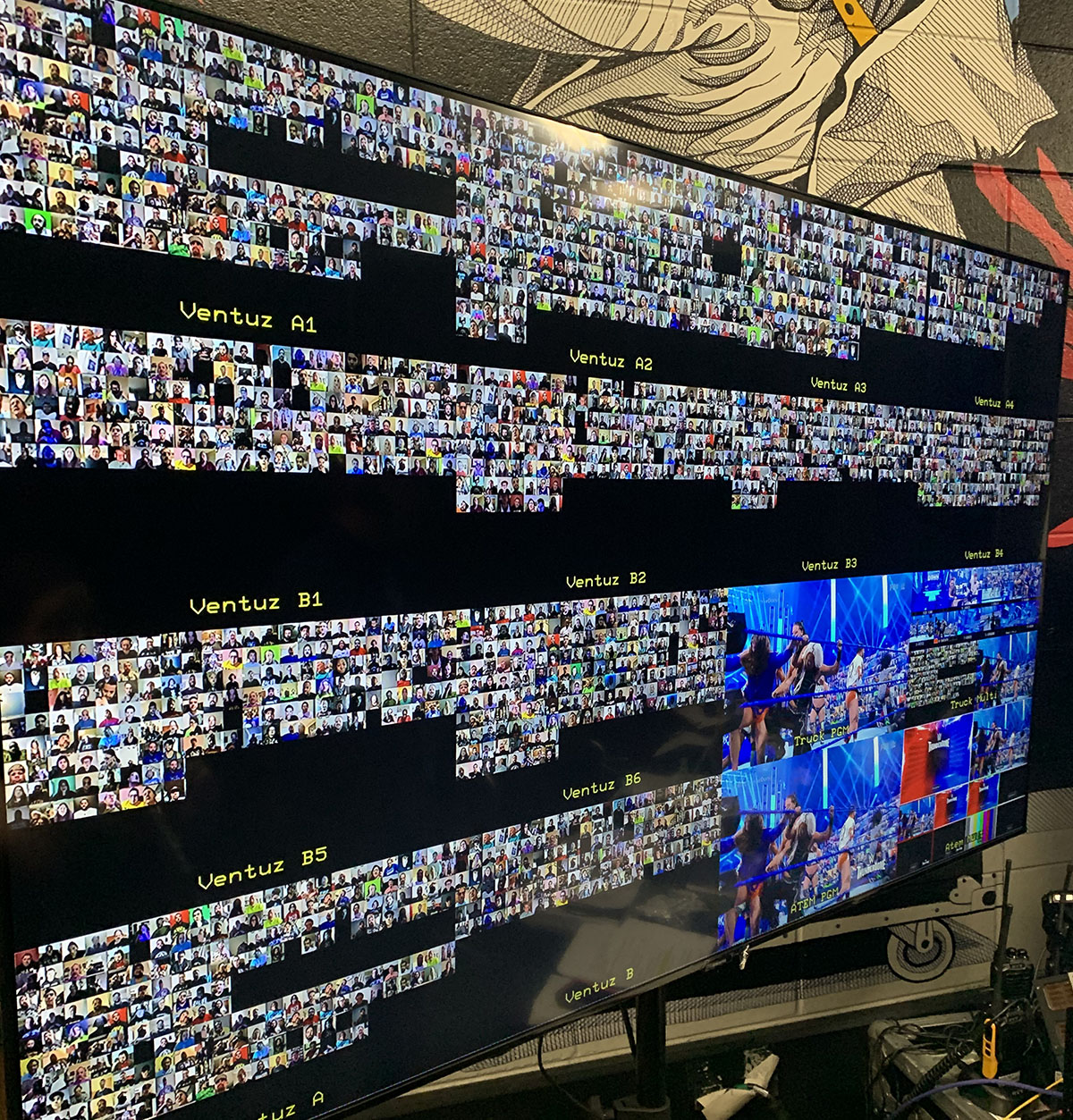Eric Gazzillo, along with our friends at The Famous Group and Frozen Mountain, as featured panelists on the topic of Virtual Audience Engagement at the Mondo|Stadia’s global AGORA Conference, which aired on April 20, 2021.
Origins of the WWE ThunderDome Virtual Fan Experience
"The streaming industry is a crowded market, so it was imperative that we distinguish our virtual fan experience technology as a suite of products and services that provides event producers with the reliable elements of control they’ve come to expect in traditional live events."
As the coronavirus pandemic and a host of government-regulated safety mandates swept the nation in 2020, event planners, venue professionals and broadcasters were forced to redefine best practices for hosting live events while ensuring the safety and wellbeing of talent and audiences in large gathering spaces. Event producers were especially challenged with finding a new medium to connect with and engage target audiences. As public safety regulations tightened in the midst of the pandemic, venues began experimenting with a wide range of solutions to overcome the unprecedented obstacles they faced. Producers quickly exhausted early audience simulation efforts with minimal success, including reduced-capacity ticketing, piping virtual crowd noise into venues, cardboard “spectator” cutouts to fill vacant seats, and inserting fans into venues digitally via augmented reality. Finally, through a series of trial and error, the single standout solution that has revived live events, and proven more effective and authentic than any other – the “virtual fan experience” – was born.
Virtual Fan Experience at ThunderDome in Amway Arena
The industry veterans at World Wrestling Entertainment, Inc. (WWE), were among the first to rise to the challenge and tackle this solution head-on with their debut of the revolutionary ThunderDome virtual fan experience which premiered during Friday Night SmackDown at the Amway Center on August 21, 2020. WWE’s bold choice to fill the arena with 1000 virtual fans remains one of the largest and most successful use cases to date.
Tasked with designing a robust, large-scale virtual fan experience, producers at The Famous Group called on their long-time technical partners at Quince Imaging and renowned cloud infrastructure experts, Frozen Mountain, to develop a premium, custom solution for WWE, scalable enough to be deployed in professional sporting arenas worldwide. The WWE’s world-class solution was conceived through large-scale installation of the most sophisticated high-resolution LED screens, populated edge to edge with WWE fans. The infrastructure created a larger-than-life virtual audience mosaic consisting of 1,000 live fans, each streaming into the broadcast from their own home, transcending time zones and geographical boundaries throughout the world in real time. As with traditional live events, virtual audience members were able to cheer on and engage with their favorite entertainers as their on-air participation was filmed live throughout the broadcast.
The virtual fan experience concept has grown rapidly over the past year in both prevalence and sophistication. While early versions of virtual fans were little more than set dressing, the virtual fan experience has evolved into a suite of services and products that includes thousands of concurrent livestreams, tiered seating, complex LED and graphical layouts, tiered moderation and most importantly, low-latency video feeds for fans to truly react in real time. Key to the success of this product has been combining the low-latency of traditional video conferencing services, with the level of graphic control and audience management required for a live production.
Bringing the virtual fan experience display system together was a complex technological feat which required filling over 1500 LED tiles with WWE’s most dedicated fans streaming in from all around the world while simultaneously keeping WWE and technical partners connected throughout the broadcast, all while adhering to strategic planning guidelines in compliance with COVID-19 regulations. Deploying a combination of cloud-based control, SRT video transport technology, and remote intercom systems, made it possible for the majority of the game-day operations staff to work off-site. With moderators, producers, and support staff working remotely, local team members were able to monitor the real-time render engines on premise while adhering to proper social distancing protocols.
Quince Imaging director of innovation, Eric Gazzillo, summed it up best when he stated, “The streaming industry is a crowded market, so it was imperative that we distinguish our virtual fan experience technology as a suite of products and services that provides event producers with the reliable elements of control they’ve come to expect in traditional live events. Geographical flexibility for clients, producers and fans, technical scalability, graphical adaptability, and moderation controls are all integral elements that provide a measure of control and security unrivaled by any other product on the market.”





